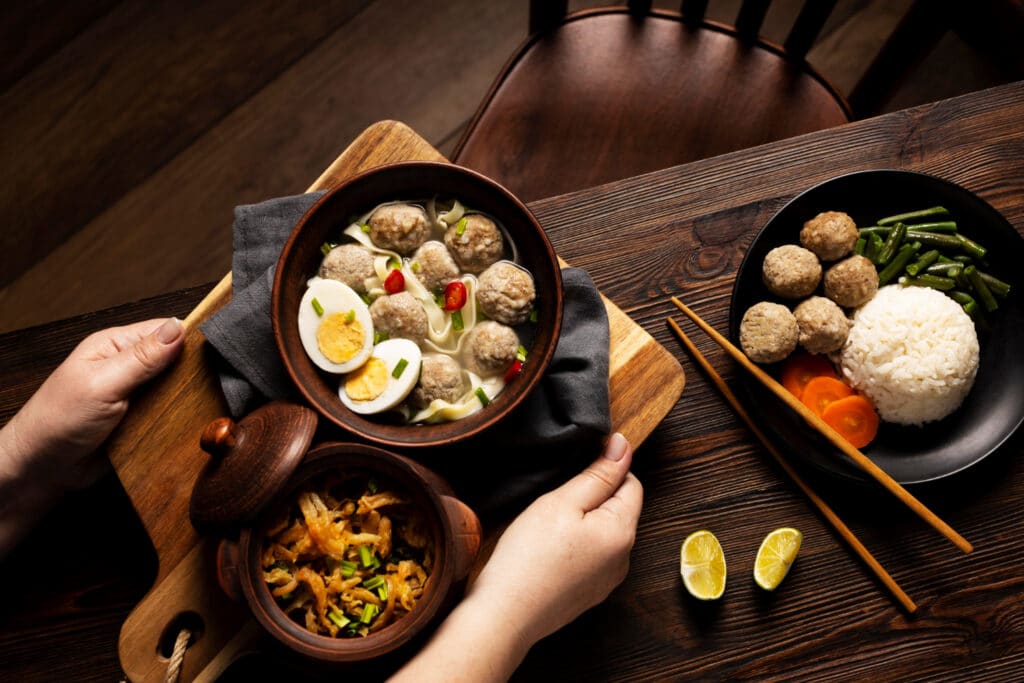In recent years, Asian-inspired foods have taken the culinary world by storm, leaving an indelible mark on the tastes and preferences of consumers. This trend is more than just a passing fad; it represents a significant shift in the way people approach their dining choices and culinary adventures. In this post, we’ll delve into the growing influence of Asian-inspired foods and why they have become a dominant force in the world of gastronomy.
One of the most remarkable aspects of Asian-inspired foods is their rich and diverse flavors. From the fiery spices of Thai curries to the delicate umami of Japanese sushi, Asian cuisine offers a wide spectrum of taste sensations. Consumers are increasingly drawn to the adventurous and bold flavors that Asian dishes bring to the table. The interplay of sweet, savory, spicy, and sour notes creates a symphony of tastes that tantalizes the palate, making each meal an exciting culinary adventure.
In an era where health-conscious eating is paramount, Asian-inspired foods have gained popularity for their nutritious and balanced attributes. Many Asian dishes incorporate fresh vegetables, lean proteins, and minimal processing, aligning perfectly with the growing demand for wholesome and mindful dining choices. Whether it’s the clean and crisp flavors of a Vietnamese spring roll or the light and nourishing qualities of Japanese miso soup, Asian-inspired dishes provide a guilt-free indulgence for those looking to maintain a healthy lifestyle without compromising on taste.
Exploring Asian cuisine goes beyond satisfying one’s palate; it’s an opportunity for cultural exploration. Through food, consumers gain insights into the traditions, customs, and values of Asian societies. Trying dishes from various Asian countries becomes a journey of discovery and appreciation for different cultures. For example, enjoying a traditional Korean barbecue meal isn’t just about savoring the grilled meats; it’s about experiencing the communal and interactive dining culture of Korea. Similarly, indulging in dim sum isn’t solely about dumplings; it’s about partaking in a time-honored Chinese tradition of family gatherings and shared meals.
The allure of Asian-inspired dishes has inspired many individuals to embark on home cooking adventures. Experimenting with recipes and ingredients allows people to recreate their favorite Asian flavors in their own kitchens, adding a personal touch to their culinary explorations. This trend not only fosters creativity in the kitchen but also strengthens the connection between food and culture. Home cooks can take pride in preparing dishes like Thai green curry, sushi rolls, or Indian butter chicken, infusing their own unique twists and interpretations into these beloved classics.
From upscale restaurants to fast-casual eateries, Asian-inspired dishes are prominently featured on menus across the culinary spectrum. Restaurants are responding to the growing demand for these flavors, making it easier than ever for consumers to enjoy their favorite Asian-inspired meals. Whether you’re dining at a high-end Japanese restaurant known for its meticulously crafted sushi or grabbing a quick and flavorful bowl of Vietnamese pho from a neighborhood eatery, Asian-inspired options are readily available to cater to diverse palates and dining preferences. This accessibility has not only broadened the culinary landscape but has also introduced consumers to the nuances of Asian culinary traditions and cooking techniques.
Sampling Asian-inspired dishes is like traveling the world through taste. It offers a passport to experiencing global flavors and ignites a sense of wanderlust for those who crave international adventures, even when they can’t leave their hometown. Trying dishes from different Asian countries, whether it’s Thai, Japanese, Indian, Chinese, or Korean, allows consumers to connect with the world on a plate. These diverse flavors serve as a bridge to cultural exchange, fostering an appreciation for the heritage and history that underlie each dish.
The growing influence of Asian-inspired foods on consumers is undeniable. It has reshaped dining choices, encouraged culinary exploration, and provided a platform for cultural appreciation. As this culinary revolution continues, consumers can look forward to even more exciting and diverse flavors on their plates, perpetuating the culinary journey that Asian cuisine has ignited. Whether you’re a seasoned food enthusiast or a curious novice, the world of Asian-inspired foods invites you to embark on a flavorful adventure that transcends borders and brings the globe closer together, one delicious bite at a time.



